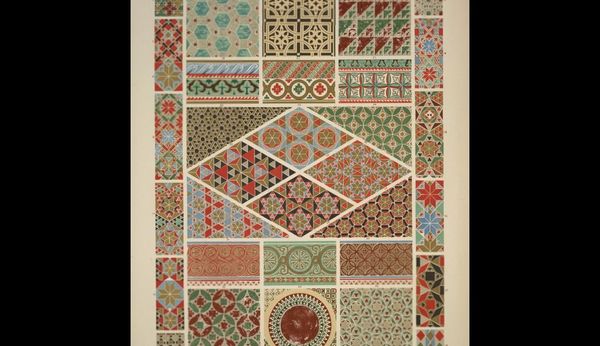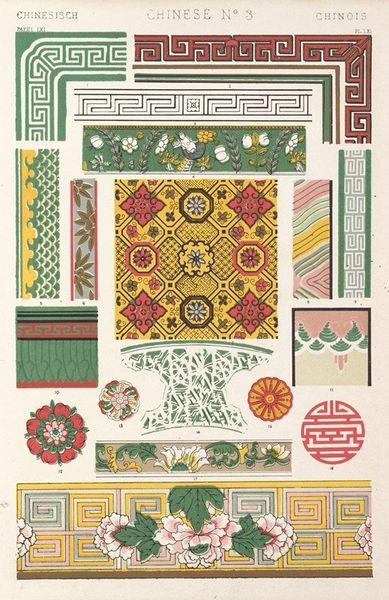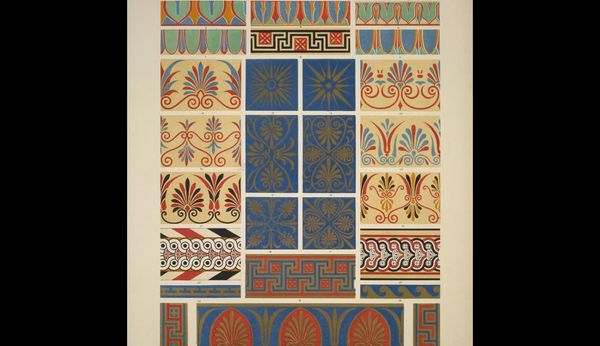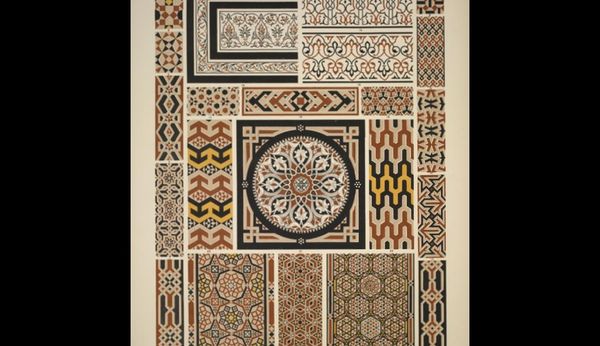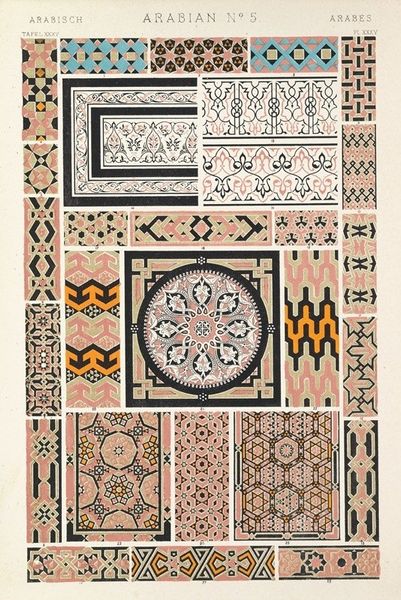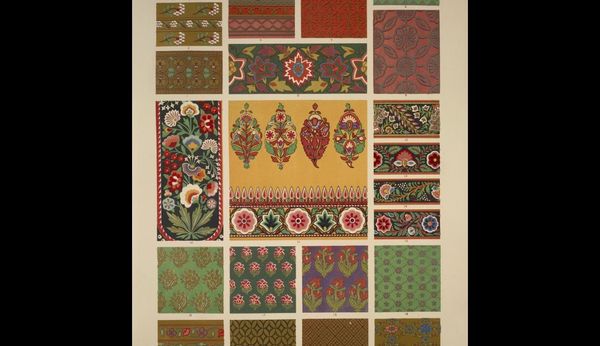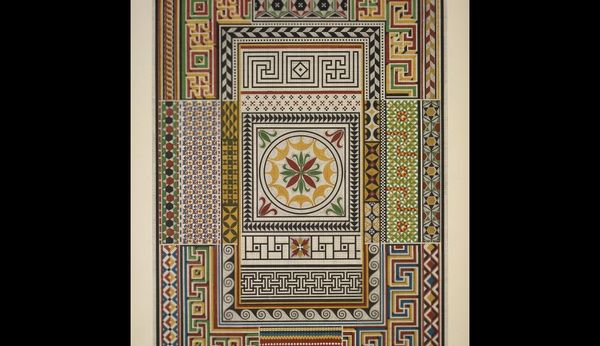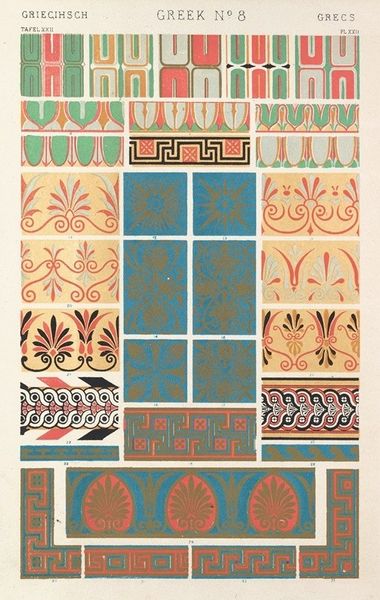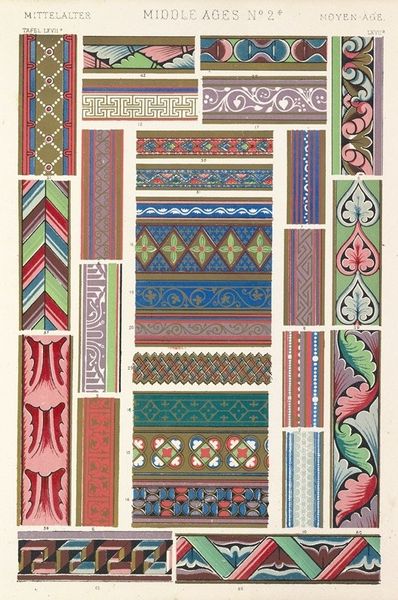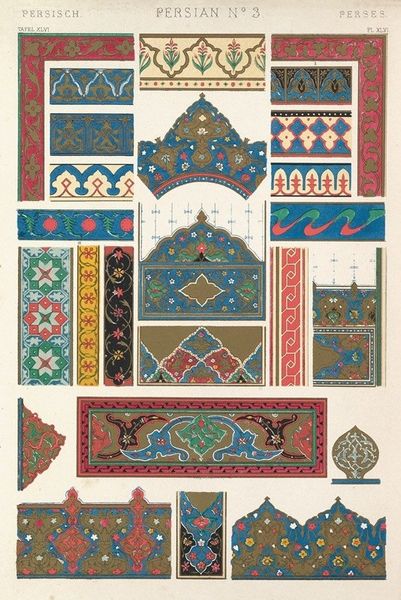
Chinese Ornament no. 3. Ornaments painted on porcelain and wood from woven fabrics
0:00
0:00
drawing, textile
#
drawing
#
pattern
#
textile
#
geometric pattern
#
organic pattern
#
geometric
#
orientalism
#
geometric-abstraction
#
decorative-art
Copyright: Public domain
Owen Jones created "Chinese Ornament no. 3", a study of patterns painted on porcelain and wood sourced from woven fabrics. Jones lived during a time of increasing British imperialism, including military and economic aggression toward China, which culminated in the Opium Wars. Jones was one of many Westerners who appropriated artistic styles from other cultures. He documented non-Western designs, ostensibly to democratize design and make it accessible to all. Yet, his work also reinforced a colonial gaze, one that positioned Western artists as authorities on global aesthetics. "Chinese Ornament no. 3" is complex, showcasing a desire to learn from other cultures while potentially perpetuating power imbalances. It invites us to consider how cultural exchange is always inflected by the politics of the time. How does the history of colonialism shape our understanding of the image? And what does it mean to engage with art that carries such a complicated legacy?
Comments
No comments
Be the first to comment and join the conversation on the ultimate creative platform.
